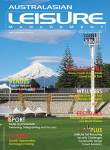ARU’s $6.3 million loss balanced by record participation

While announcing a $6.3 million loss for 2014, the Australian Rugby Union (ARU) has also revealed record participation levels in the sport in 2014, with 687,488 participants enjoying rugby ‘experiences’ nationally, an increase of 12% compared to 2013.
Releasing its annual report for last year, the ARU said it had achieved an underlying business surplus of $700,000 but an overall deficit “in a year that focused on driving a sustainable future for the game, through direct grants to member unions and the delivery of national programs.”
The Australian newspaper suggested that $3.3 million in assistance to keep the Melbourne Rebels Super Rugby franchise afloat contributed to the overall deficit.
The ARU said a plan to determine the game’s future strategy from 2016 will include the opportunity for members of the public to provide their views on the future direction and priorities for Australian rugby.
Detailing participation in rugby, the ARU explained that 241,577 of the total participants played in rugby competitions with five or more games/sessions, an increase of nearly 5% (10,915) in 2014. A further 445,911 participants had less than five games/sessions, an increase of 16% (60,662).
For the past two years, rugby participation has grown annually by an average of 20% and the trend is set to continue through the introduction of a new non-contact version of Rugby - VIVA7s and Sevens Rugby’s presence at the 2016 Olympic Games in Rio.
Although overall participation has increased, participation in club rugby has remained stable with marginal growth of less than 1% from 2013.
ARU General Manager of Rugby Participation Andrew Larratt said the national findings were encouraging, with the introduction of programs that are part of a plan to attract new and diverse people to Rugby and in the long term re-energise club Rugby.

Larratt stated “our purpose is to help more participants play more often across all formats of non-contact Rugby, sevens and 15 a-side Rugby.
“There’s a growing appetite for Rugby Sevens and we expect that to continue as we sharpen our focus on Sevens in the lead-up to the 2016 Olympics.
“However, we acknowledge that we’re only seeing marginal growth in the traditional format of our game. It’s important for us to work closely with clubs and competitions nationally to help recruit and retain players and seek to grow demand and convert new participants across all three formats - VIVA7s, Sevens and 15-a-side Rugby."
Larratt also highlighted the need to continue to build on the 6.3% increase in School Competitions as Australian Rugby looks to broaden rugby’s appeal to boys and girls across the country.
He added “schools are a critical part of Rugby’s plan to help get more people involved as players, volunteers and supporters.
“It is was pleasing that in 2014 National Rugby Week had over 120,000 students from 726 schools across all eight states and territories participating in classroom, field and carnival-based rugby activities.
“We also know that more women are playing rugby internationally than ever before, as global participation increased from 1.5 to 1.77 million (18% growth) in 2014. Australian Rugby has demonstrated similar growth, which highlights the relevance, diversity and global nature of our sport.”
The traditional format of 15 a-side Women’s Rugby saw 12,733 participants, while Women’s Sevens attracted a further 13,488 for a combined total of 26,841 participants, an increase of 18% compared to 2013.
At a state level, when aggregating all participant categories Queensland led the country with 296,356 participants (43% of 687,488) in 2014, representing a 14% increase. New South Wales has the highest number of competition participants, with 116,521 (48% of 241,577) in 2014.
ACT and Western Australia maintained overall participation rates for Club Competition, however significantly increased promotional or occasional participation, sampled over 60,000 and 40,000 participants respectively. Victoria, South Australia, Tasmania and Northern Territory recorded marginal decreases in competition and non-competition programs in 2014, while Tasmania and Northern Territory achieved positive growth with more than 5,000 promotional participants.
The Australian Financial Review also reported that the ARU and its SANZAR counterparts in New Zealand and South Africa are closing in on a new deal that should double the amount Australia receives from broadcasters to between $35 and $40 million annually for a five-year term from 2016 to 2020.
Images: The Wallabies new kit deal with ASICS (top) and Women's Rugby Sevens action (below).
20th April 2015 - RUGBY UNION PLAYER DIES AFTER HEAD INJURY IN NSW CENTRAL NORTH
22nd February 2015 - NEW TV DEAL TO TURNAROUND AUSTRALIAN RUGBY FINANCES
26th January 2015 - ARU TO REINTRODUCE NATIONAL WOMEN’S RUGBY CHAMPIONSHIP
11th August 2014 - NATIONAL RUGBY WEEK KICKS OFF IN AUSTRALIAN SCHOOLS
10th December 2012 - HISTORIC CONSTITUTIONAL CHANGE FOR AUSTRALIAN RUGBY
